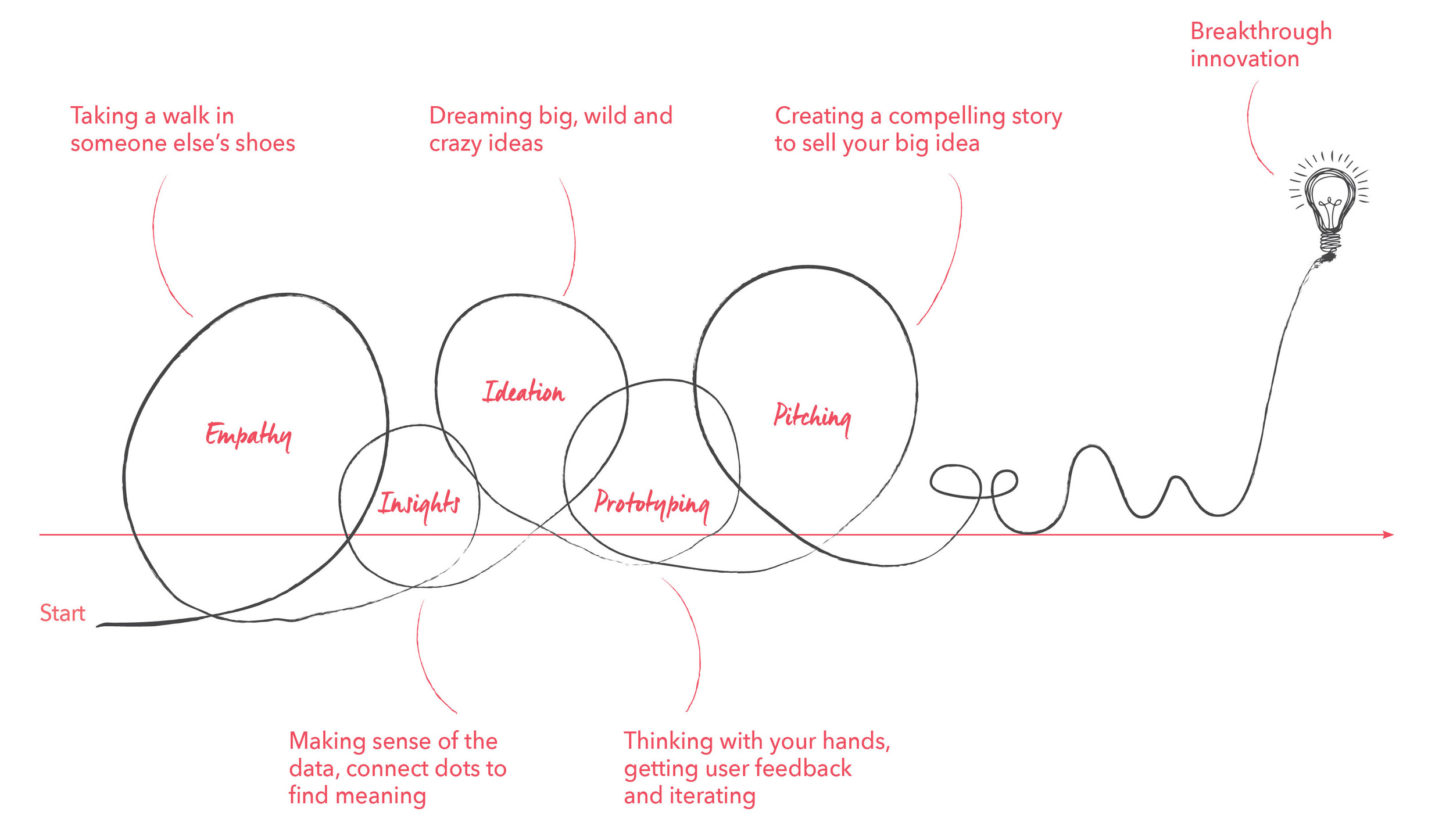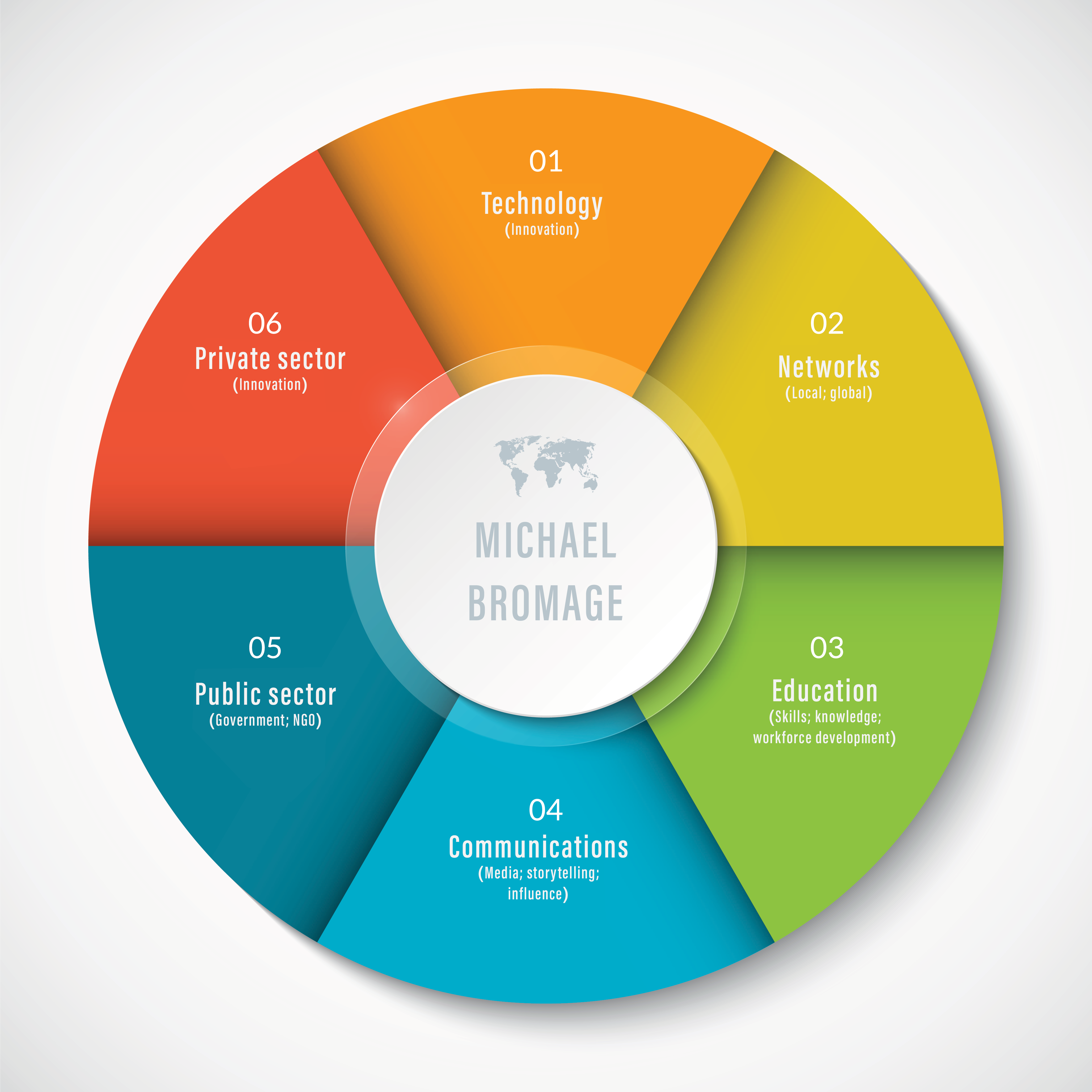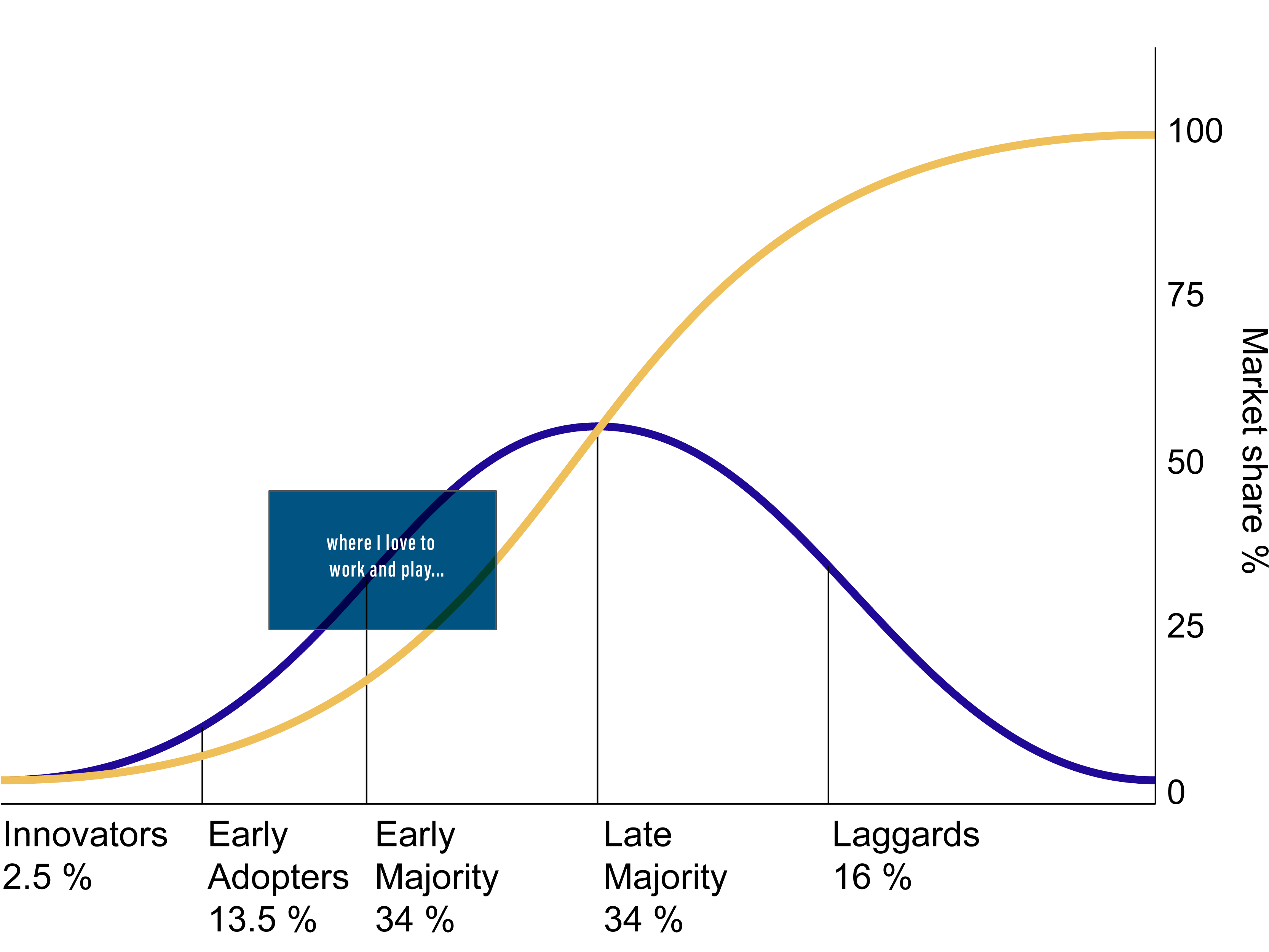Wisdom
Values help us navigate through life and often create wisdom. Here are a few I’ve picked up along the way. Some I feel strongly about, others I’m still exploring.
Travel, with an open mind Take every opportunity to travel, to explore new places and new experiences. When you travel, resist the temptation to do comparisons. Leave what you know at home and open your mind to the moment. Listen, feel, gain wisdom, become a better person. Travel, with an open mind. 30% illogical If you want an interesting life and contribute value to your community, be 30% illogical, especially in today’s world of big data and evidence based decision-making. To be illogical is to be human. When something doesn’t completely make sense, people pay attention, and often, over time, your illogical idea helps shape our world. A car that doesn’t need petrol; a movie where humans live in a world made by robots; using digital bio neural sensors rather than pharmaceuticals to measure and treat emotional mood swings; instantaneous conversation with people around the world (in messages that have less than 140 characters)… Illogical ideas are what changes our world. Use data, but be human, too. Be 30% illogical. Work with people who care Life is better when you collaborate with people who care. People who care: make time; people who don’t care: make excuses. Next time you ask someone, ‘Can you help me do (insert project)?’ listen to how do they respond. Do they care? Design for life Meet humans, identify problems and opportunities, and co-design systems, services, programs, products, resources and experiences that provide humans with opportunities to lead a richer, inspired and more cohesive quality of life. Design for life and develop your customer groups. People usually have an idea of what they need to improve their quality of life, for themselves and for their community; sometimes this is a very clear desire, pain-point or a simple gut feeling. It’s our job to identify these needs and opportunities and co-design solutions and I’m excited to contribute to this collaborative process. Driving questions… People make the place Mentor, lead, teach and empower people to nurture a richer, more cohesive community and work environment; a place we want to live, work and play. Mentor and develop your team. Driving questions… Stories change cities Tell stories that provoke, inform, entertain and inspire and grow your audience. Since the 1920s, New York has been known as the city that never sleeps; a place people go to chase their dreams; to struggle till they find success. Stories helped build this perception, stories such as two movies released with the title ‘The City That Never Sleeps’; Frank Sinatra’s song ‘New York, New York’; and the Sex in the City television series – a consistent flow of stories and content perpetuating this theme. Recently, a new type of story has emerged, changing this busy image of New York to a more personal, intimate perception of the city. ‘Humans of New York’ is an intimate exploration of New York residents, introducing a richer, more diverse perspective of New York. Both styles of storytelling continue to attract new residents and visitors to New York who have shared values, strengthening this identity of the world city. Unfortunately for many cities, in recent times there has been an unhealthy balance of stories focused on crime, economic troubles, water shortage and lack of transparency, resulting in low level of confidence in the community and hesitation from potential investors and residents to move to our cities. We now have the opportunity to change this perception through original content, and positive, authentic stories promoting the diverse and rich lifestyle experienced by our residents, stories about innovation, passion and commitment, stories to help establish a positive identity for our city, especially for the millennial and z generations. Driving questions… Stories change cities. And we produce the stories. Think in systems Most people don’t see how their actions and the actions of others affect the systems they participate in. It’s really important to consider the (eco-)systems that you are part of and what you can do to help develop stronger, healthier, more prosperous systems. Focus on being better, not bigger Often the focus for success is based on growth – grow your customers, grow your business, grow your numbers… Instead, it’s better to focus on being better – provide better service, provide better business, provide better experiences… Everyone wants to experience the better thing, so when you focus on being better and you do better, more people get involved. And you grow. Progress makes its own rules If you’re doing something new – actual innovation – there are no rules to follow. Simply because progress makes its own rules. Doing something new? Design the rules as you go. If there are rules that you need to follow it’s a sign you’re not innovating. Two questions all public servants - everyone actually - should be asking every day The pure epitome of service. Useful data + creativity + rich storytelling = value Evidence of need is a very useful starting point when you’re working towards a goal. To achieve that goal, you also need a bit of creativity to design a valuable product, and a strong story to communicate your design; combined this will help identify, design and deliver your valuable product/project. The ideation model does this well. Form a small team; make what people want/need; use resources wisely Agile teams; big impact Life is mostly made up of many small teams working towards similar goals; this is healthy competition. The smaller the team, the more agile you can be; the larger the organisation, the more resources you can access. I love working with small, agile teams in large organisations. Having a clear goal, a strategy and a plan; pulling together experts as the project progresses; collaborating and delivering with purpose; celebrating milestones and learning from the experience. Awesome. What if... now how? One of my favourite questions is ‘what if… now how?’ It sparks the imagination and follows up with the important planning to make the idea real. When leading a team, ask: What if? (yellow personality – big picture ideas) …we could get waste staff to disco dance in the dump and inspire people to become interested in waste? Why? (blue personality – what does the data say) …would people care about this? (and why do I care about this project?) With who? (red personality – small, focused team; big impact) …who can we work with to make this project fun and successful? Now how? (green personality – make and implement a plan) …it’s a great idea, data says yes, team will be awesome – but how do we do it? Kanban or scrum workflows provide a salubrious experience for your team
20% time Each week allocate 20% of your time to developing yourself or your business. Many of us get caught up on the treadmill, running to get the next job done. It’s important to work in the business to develop your skills and knowledge, but it’s just as important to spend 20% of your time each week to look at the business, the market and your habits, and design process, systems, products, etc. that will help improve your business. Get everyone involved, not just managers. For a standard working week, work your jobs Monday to Thursday and make every Friday your business development day. If you don't make a decision yourself, someone else will make the decision for you As an intelligent human being, every day you have the opportunity to make decisions that shape the journey of your life and for the people you are responsible for. When opportunity arises, if you don’t make the decision, someone else will make the decision for you. Doors for decisions If you’re having trouble making a decision, first decide if the decision leads through a two way door, or one way door. Two way doors allow you to come back, and bring back any experience you’ve had. A one way door means you must keep moving forwards. Most decisions in life are two way doors and if you can make a two way door, considering the broad experience of life, decision making becomes easier. Spend a bit more time thinking and planning before stepping through a one way door. Deliberate practice Each time we do a job, the tasks must help us improve skills and knowledge required to become a master. Therefore, each job is an opportunity to practice and improve a skill; if you want to become a better filmmaker, on the next job deliberately decide to improve a specific task, such as better sound recording, and use that job to practice and improve your skills and knowledge. Confluence of industry To do great work, you need to be aware of the world around you. This is where I like to work: Know where you're working on the innovation bell curve Although I help humans engage with technology at all stages of the curve, my favourite place to work is in the first third of the diffusion of innovation bell curve. There’s a healthy balance of risk and hope; and a delicious amount of collaboration, creativity and innovation. Know who you’re helping and where they sit on the diffusion of innovation bell curve. Know when a plan to play is more important than a goal It’s extremely important to have a clear goal to work towards; you can’t score without a goal. There are times, though, when a plan to play is more important than a goal. Especially when you’re in the ideation or innovation stage of a project. Make a plan to play; to research and discover; to identify needs and opportunities, and your goal will emerge. Creative studios are great at this, or a screen in the work space displaying a big board of community issues for small, agile teams to tackle and solve. Plan to play. Understand the hierarchy of wealth Inspired by Maslow’s Hierarchy of Needs, is this hierarchy of wealth. I would love creativity to be the foundations of our society, but in reality, at least in this time period of human existence, the above seems to be true. You need each foundation in place, before you can successfully build the next layer. Therefore, build strong foundations as you design and nurture each layer required for a wealthy life. You need routine and discipline as you develop and automate or outsource each level. The wonderful thing is, each layer you work on trickles down to strengthen layers below. Creativity can play a role in each stage of growth. The secret to being creative... All you need to do: is don’t do what’s expected. Know the status quo and then deliver something different, something better. Something that excites you, that makes people lean forward and pay attention, that truly inspires people. Remi can tell you more. Kaizen My professional drive is to help people enrich their quality of life – what can we do today that will help make our, and our community’s, quality of life better tomorrow? Every day, I utilise a combination of leadership, creativity, and powerful storytelling skills to influence and inspire people to act, to change cities, to improve our quality of life. Little by little we improve our quality of life each day. BAU (business as usual) = slow death* When you hear people continually say they are doing business as usual, be alert. Humans are creative creatures, always innovating, building new things, making business as usual obsolete. Business as usual is the slow death of your company; your team; your role. If someone says they are doing business as usual, ask them what new things they are working on. *Unless your BAU is to innovate. Do it first, better, or differently Want to win? Simple. Do it first, better, or differently. Why it's important to ship at 80 If you keep working at it, you’re always going to get better at what you do. Therefore, if what you’re working on isn’t 100% perfect, when you get to 80% perfect, ship it. Publish it. Ship it. Get it out the door. Then listen to your customers, learn from what you delivered, and add improvements to the next project. Then ship the next project at 80%. Repeat. Your tenth project will at least be 800 times more perfect than your original; especially compared the to person who is still sitting in their office or studio trying to get their first project 100% perfect. Thanks to Seth Godin for the concept. People who always say they are busy are often poor collaborators If someone says they are busy, it means they are not in control of their time; either someone else controls their time/decision-making or they have poor time discipline. This means they will make poor project partners or collaborators. On the other hand, find out why they are busy. It’s an opportunity to identify a need or behaviour, then co-design a solution. Why the 80/20 rule is valuable... At the end of each month, or week, 80/20 your life. Make a list identifying 20% of things that cause most of your problems in your life, and 20% of things that are most helpful; work, people, processes, etc. Then action to remove the identified things that cause unnecessary problems and put a plan in place to nurture the things that are most helpful. Over time, you’ll engage in more helpful things and less troublesome things. I adapted this practice from the Pareto principle. Note: this only works with things you can control. Why it's important to know everyone lives in their bubble While I was a digital nomad I discovered that everyone lives in their bubble. The majority of people genuinely care about their immediate environment; caught up with the gossip, issues and concerns of their work place and local community, which influences their values. They may be aware of the world, but it’s their local bubble that is their reality. ‘Local’ meaning where they spend most of their time. It’s interesting that when people change environments – maybe to a new town or a new community – they adapt the new bubble and get swallowed into the gossip, issues and concerns of their new work place and new local community, and often forget their previous bubble. When engaging people, if you want to connect, try to understand what bubble they live in. Better yet, live in their bubble for a while. Strong views; loosely held (Marc Andreessen) Best explained via Tim Ferriss’ interview with Marc Andreessen. Excerpt: “Most people go through life and never develop strong views on things, or specifically go along and buy into the consensus. One of the things I think you want to look for as both a founder and as an investor is things that are out of consensus, something very much opposed to the conventional wisdom… Then, if you’re going to start a company around that, if you’re going to invest in that, you better have strong conviction because you’re making a very big bet of time or money or both. [But] what happens when the world changes? What happens when something else happens?” That’s where “loosely held” comes in for you. People everywhere hate changing their minds, but you need to be able to adapt in light of new information. Many of my friends in this book will fight you tooth and nail over a topic, perhaps making dinner company nervously glance around, but as soon as you cite better information or a better logic, they’ll concede and say something like, “You’re totally right. I never thought about that.” People who play team competitions make great collaborators All kids should play a few seasons of competitive team sport or music. When you play on a team, that has an end goal (like a seasonal championship), and multiple milestones to reach that goal (weekly matches or performances) you learn teamwork, discipline, focus, resilience and perseverance. All wonderful skills for co-design and business partnerships. Find someone who was a captain for the winning team and you get a leader as well. Things to do everyday... Everyday, make and contribute something valuable to the world; start with the people in your community. Everyday, learn something new; do something new – human beings are creative, fuel this creativity by learning and doing something new each day. Provoke, inform, entertain, inspire; mentor, teach.Travel, with an open mind.
30% illogical.
Design for life.
Discover, design, deliver methodology (human centred design: inspire, ideate, implement / iterate)
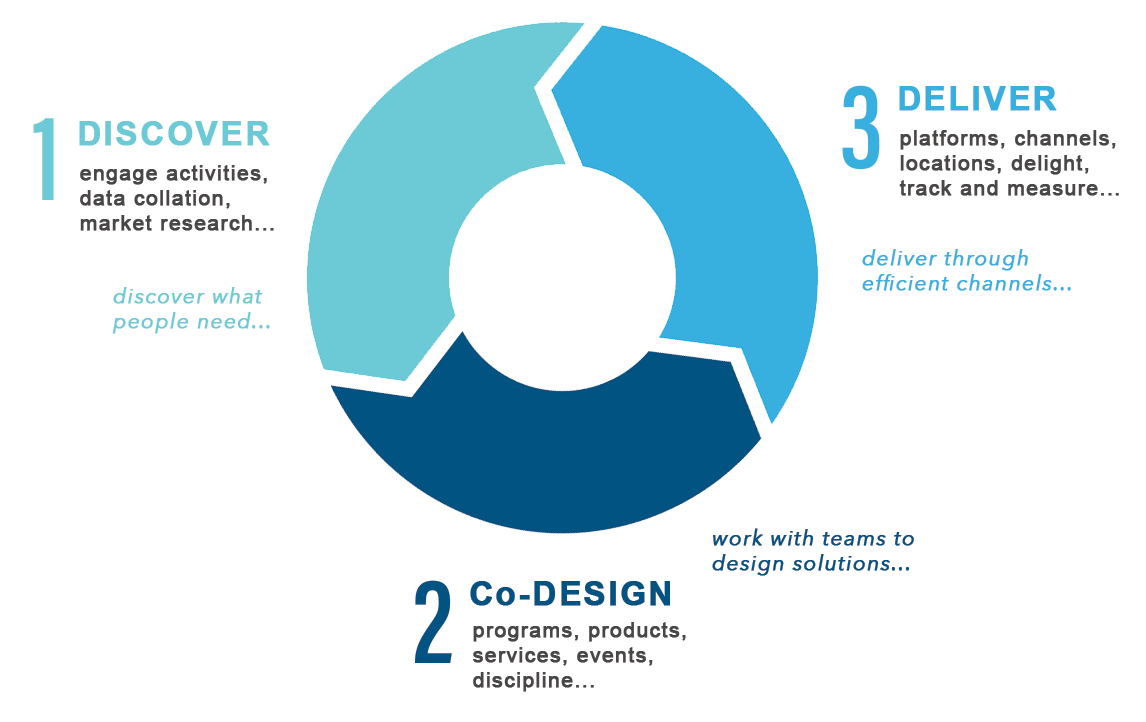
People make the place.
Stories change cities.

Useful data + creativity + rich storytelling = value
Small, agile teams; big impact
Confluence of industry
Diffusion of innovation bell curve
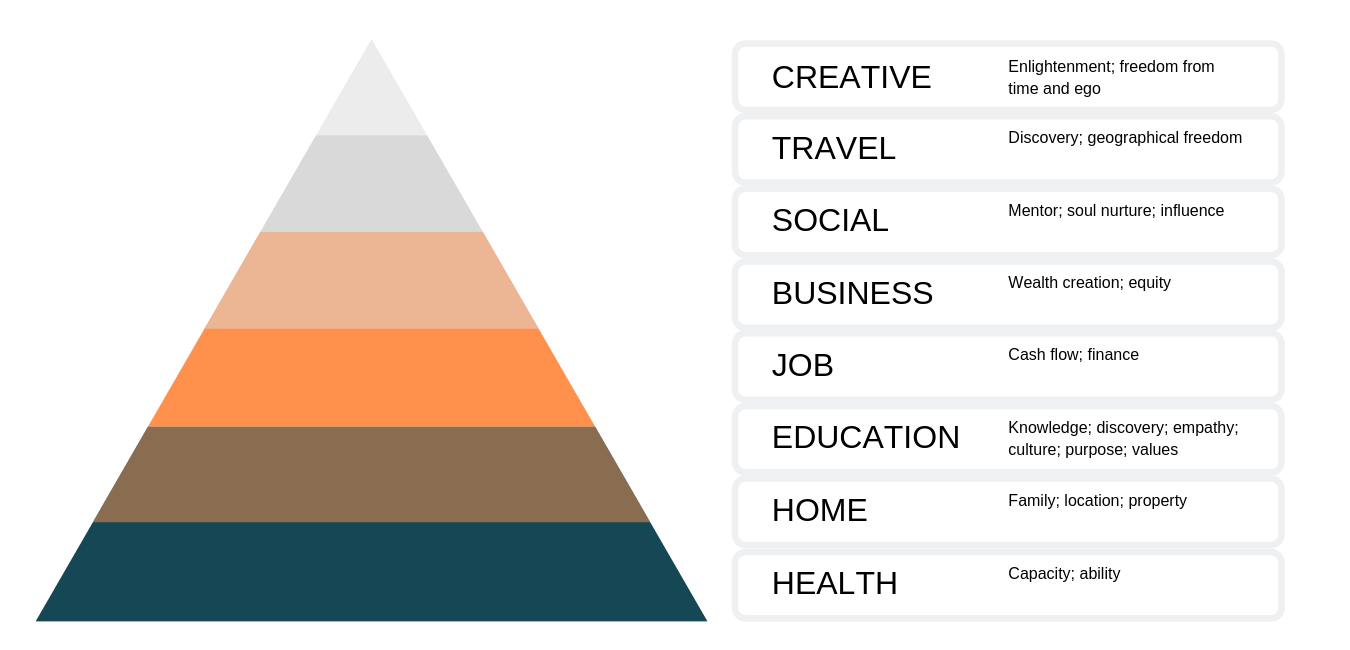
“Better humans make better ORGANISATIONS And better ORGANISATIONS make a better world.” Mykel Dixon.
